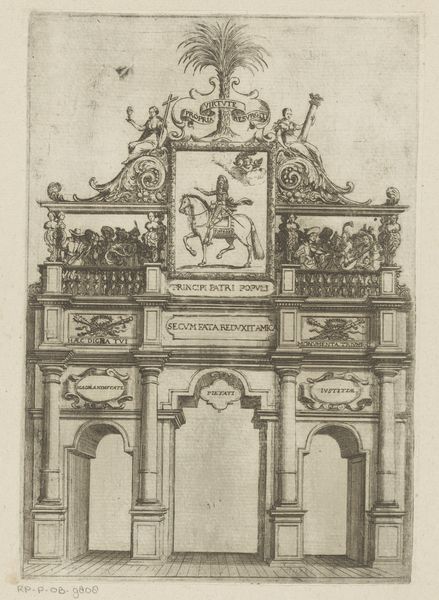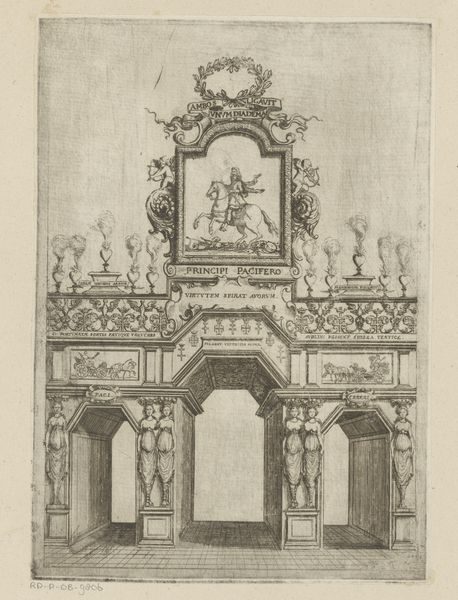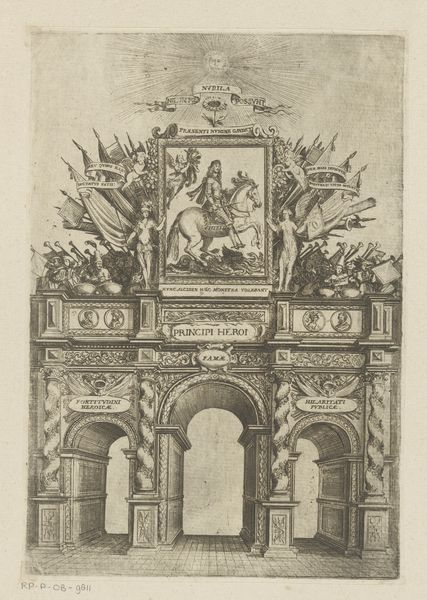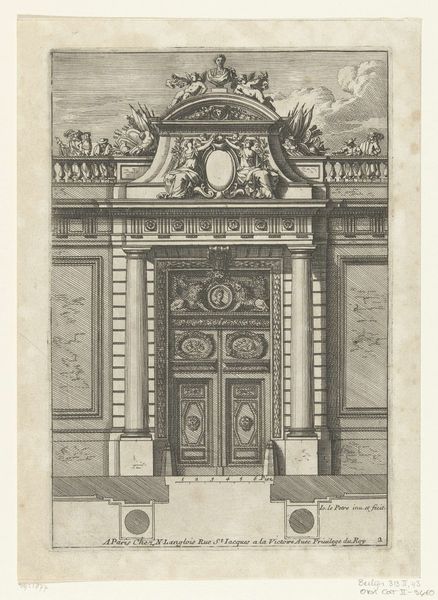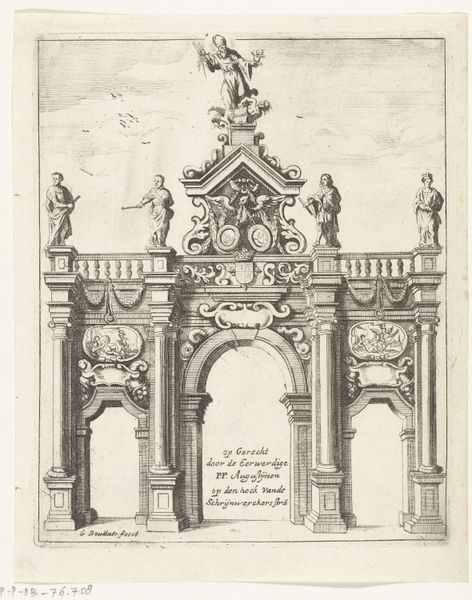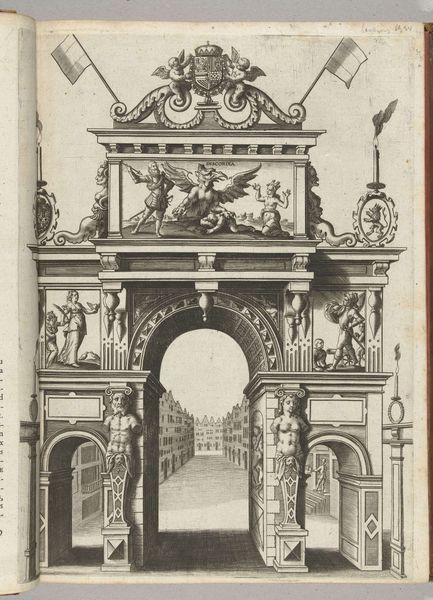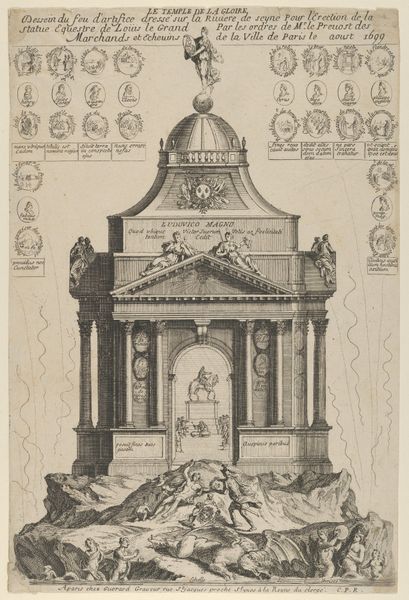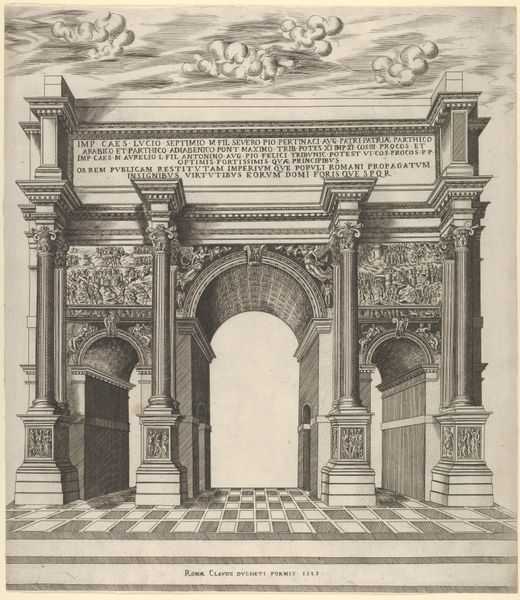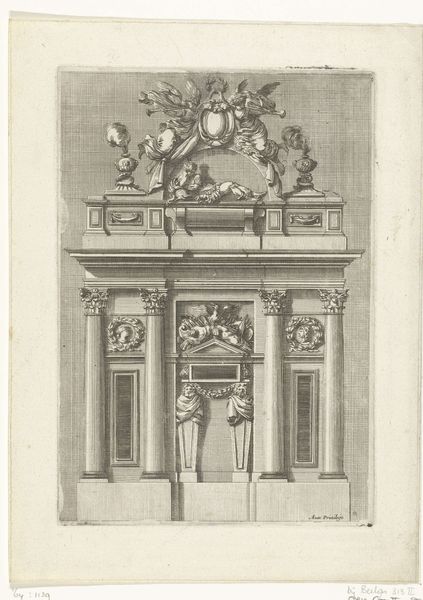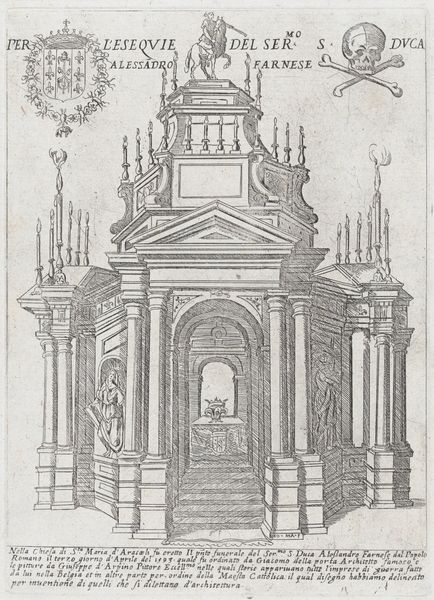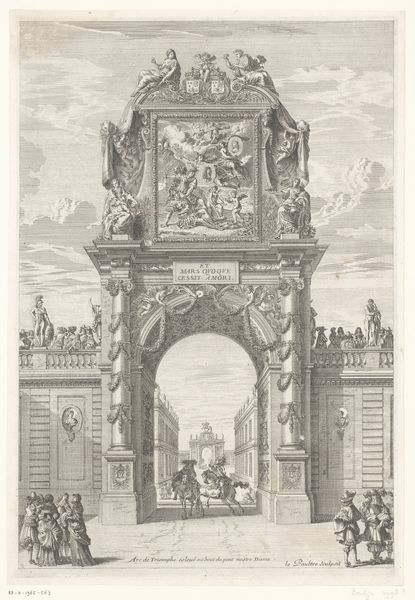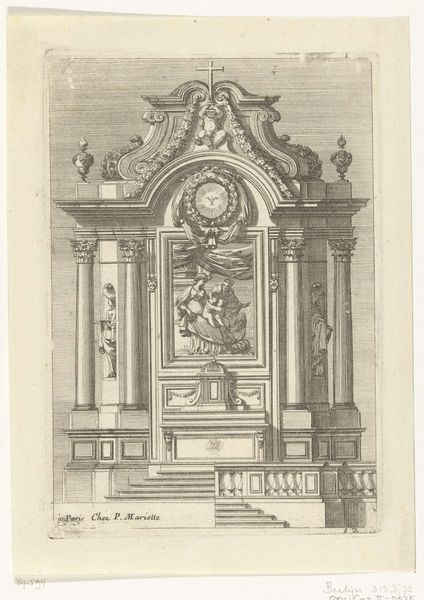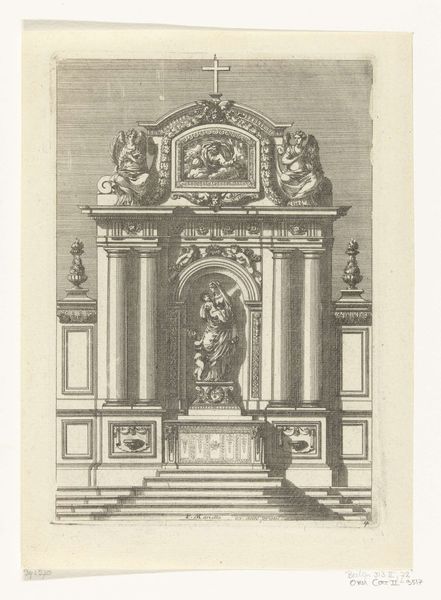
Speculum Romanae Magnificentiae: The Arch of Constantine, Rome 1514 - 1536
0:00
0:00
drawing, print, engraving, architecture
#
drawing
# print
#
column
#
arch
#
history-painting
#
italian-renaissance
#
engraving
#
architecture
Dimensions: mount: 17 1/2 x 12 3/8 in. (44.5 x 31.5 cm) sheet: 11 5/16 x 8 7/8 in. (28.7 x 22.6 cm)
Copyright: Public Domain
Agostino Veneziano created this engraving of the Arch of Constantine in Rome sometime between 1514 and 1536. The engraving process is subtractive, beginning with a smooth metal plate, most likely copper. The artist uses a tool called a burin to cut lines into the surface. These lines hold ink, which is then transferred to paper under high pressure. Look closely at the density of lines that describe shadow and form. The architecture is rendered with incredible detail, from the fluted columns to the relief sculptures. Consider the labor involved in creating this image, each line carefully etched by hand. The engraving allows for the wide dissemination of architectural wonders, playing a crucial role in shaping the Renaissance aesthetic. The print is not just a reproduction, but a reinterpretation of the ancient monument. It transforms the immense scale of the arch into an object that can be held in your hand, studied, and shared, blurring the boundaries between art, craft, and document.
Comments
No comments
Be the first to comment and join the conversation on the ultimate creative platform.
